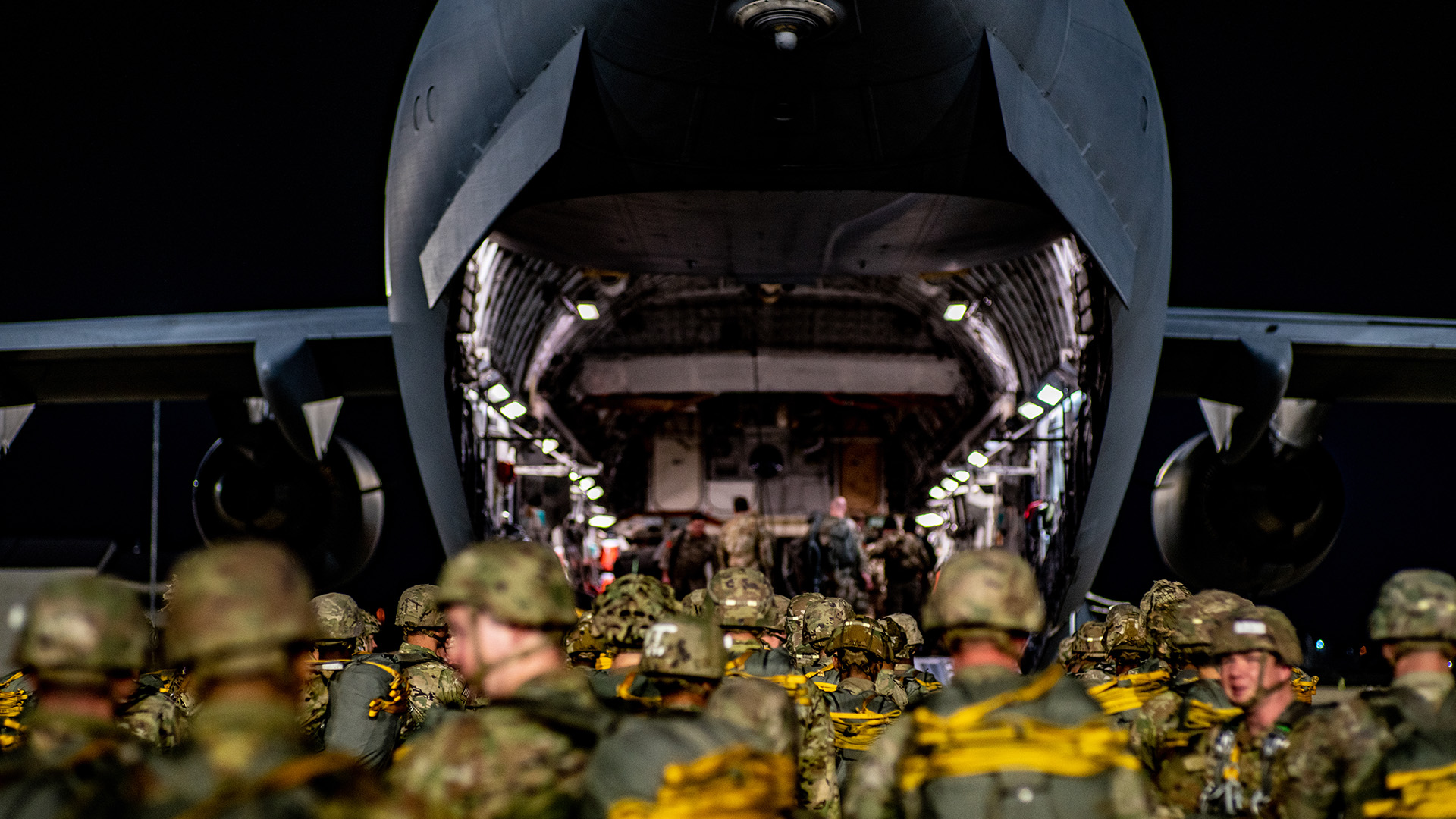

Defense Secretary Austin has ordered that roughly 2,000 U.S. service members be placed on heightened readiness in case they are needed in the Middle East, but none of the units have been selected and no one has received prepare-to-deploy orders yet, defense officials said on Tuesday.
Defense officials have not said publicly where the American troops might deploy amid ongoing fighting between Israel and Hamas following the Oct. 7 terror attacks.
President Joe Biden will ultimately decide whether to send additional forces to the Middle East, Deputy Pentagon Press Secretary Sabrina Singh told reporters on Tuesday.
If Biden decides to send more troops to the region, they would come from units that specialize in air defense; security; logistics; medical; intelligence, surveillance, and reconnaissance; and transportation capabilities, Singh said at a Pentagon news conference.
Subscribe to Task & Purpose Today. Get the latest military news and culture in your inbox daily.
“To be clear, no decisions have been made to deploy any of those forces at this time,” Singh said. “This order only puts these units on higher alert.”
U.S. military commanders will now decide which units would best meet the requirements that would be needed in the Middle East, Singh said. Those units have not yet been identified.

So far, the U.S. military has sent two aircraft carriers Gerald R. Ford and Dwight D. Eisenhower along with their strike groups to the Eastern Mediterranean as a show of support to Israel.
Austin has approved extending the deployment of the Ford’s strike group to the 6th Fleet theater of operations, which includes the Mediterranean Sea, Singh said in a statement earlier on Tuesday. The strike group had been nearing the end of its six-month deployment.
Additionally, the Pentagon has dispatched the 26th Marine Expeditionary Unit embarked aboard the amphibious assault ship USS Bataan and its Amphibious Ready Group to the Eastern Mediterranean, a defense official said on Tuesday.
The more than 2,000 Marines in the 26th MEU had been training in Kuwait when Hamas launched its Oct. 7 attacks on Israel. Marine Corps Times first reported that the unit had left Kuwait earlier than scheduled.
When asked if the 26th MEU might be used to evacuate American citizens from Israel and Gaza, Singh said that the unit currently does not have orders.
“On the 26th MEU: Right now, they have not been tasked with anything in particular,” Singh said on Tuesday. “They are there if needed and at the secretary and the president’s discretion for whatever they feel they could be used for. But they don’t have orders, and so, at this time, I’m just going to get into any operational details.”
Still, Marine Expeditionary Units have often been tasked with evacuation missions in the past. In the summer of 2006, Marines and sailors with the 24th Marine Expeditionary Group helped to evacuate nearly 15,000 American citizens from Lebanon during a war between Israel and Hezbollah.
Secretary of State Anthony Blinken has said that an estimated 100,000 U.S. citizens are currently in Israel. The State Department believes that several hundred other Americans are trapped in the Gaza Strip. So far, the American citizens in Gaza have been unable to cross into Egypt, according to the New York Times.

Marine Expeditionary Units train and are organized to conduct non-combatant evacuation operations, or NEOs, said retired Marine Gen. Robert Neller, who served as the Corps’ commandant from 2015 to 2019.
Being able to carry out an NEO is a core competency of all Marine Expeditionary Units, which must perform the task along with an Amphibious Ready Group, or ARG, during their final certification exercise, Neller told Task & Purpose.
“The ARG/MEU has many capabilities if any movement/medical support/logistical support of people is required,” Neller said. “The ARG/MEU is the DOD’s ‘Swiss Army Knife’ of capabilities across the Range of Military Operations.”
With their helicopters and landing craft, Marine Expeditionary Units are equipped to rescue people when an airport is not available for evacuation operations, said retired Marine Col. Mark Cancian, a senior adviser with the CSIS International Security Program.
If the U.S. government eventually orders a NEO for American citizens trapped by the Israel-Hamas war, the 26th MEU would more likely be tasked with retrieving U.S. citizens from Gaza rather than Israel, where Americans can still leave the country from Ben Gurion International Airport, Cancian told Task & Purpose.
A major advantage that Marine Expeditionary Units bring to such operations is that because they are based on ships, they can wait in a region for days or weeks if necessary until they are needed for an evacuation, Cancian said.
“Either the situation gets so dire they have to execute a NEO, or the situation resolves itself,” Cancian said. “I was in the evacuation of Saigon. I forget how long we were just sort of boring holes in the ocean, but it was quite a while.”
UPDATE: 10/17/2023; this story was updated with retired Marine Corps Gen. Robert Neller, who served as Marine Corps commandant from 2015 to 2019.
The latest on Task & Purpose
- Navy fires captain of guided-missile cruiser USS Lake Erie
- The M10 Booker Combat Vehicle is definitely a tank, says Gen. Abrams
- Why Navy SEALs wear a trident and other facts about life as a frogman
- A-10 Warthogs arrive, more U.S. forces coming amid Israel-Gaza fighting
- Army plans to cut ‘unnecessary maintenance’ on vehicles and weapons
